[English] 日本語
 Yorodumi
Yorodumi- PDB-2a83: Crystal structure of hla-b*2705 complexed with the glucagon recep... -
+ Open data
Open data
- Basic information
Basic information
| Entry | Database: PDB / ID: 2a83 | ||||||
|---|---|---|---|---|---|---|---|
| Title | Crystal structure of hla-b*2705 complexed with the glucagon receptor (gr) peptide (residues 412-420) | ||||||
 Components Components |
| ||||||
 Keywords Keywords | IMMUNE SYSTEM / MHC (MAJOR HISTOCOMPATIBILITY COMPLEX) / HLA-B*2705 | ||||||
| Function / homology |  Function and homology information Function and homology informationregulation of glycogen metabolic process / glucagon receptor activity / regulation of interleukin-12 production / regulation of dendritic cell differentiation / regulation of T cell anergy / regulation of interleukin-6 production / response to starvation / peptide hormone binding / TAP binding / protection from natural killer cell mediated cytotoxicity ...regulation of glycogen metabolic process / glucagon receptor activity / regulation of interleukin-12 production / regulation of dendritic cell differentiation / regulation of T cell anergy / regulation of interleukin-6 production / response to starvation / peptide hormone binding / TAP binding / protection from natural killer cell mediated cytotoxicity / antigen processing and presentation of endogenous peptide antigen via MHC class I via ER pathway, TAP-independent / antigen processing and presentation of endogenous peptide antigen via MHC class Ib / detection of bacterium / response to nutrient / cellular response to glucagon stimulus / secretory granule membrane / negative regulation of receptor binding / guanyl-nucleotide exchange factor activity / early endosome lumen / Nef mediated downregulation of MHC class I complex cell surface expression / DAP12 interactions / cellular response to starvation / transferrin transport / cellular response to iron ion / lumenal side of endoplasmic reticulum membrane / Endosomal/Vacuolar pathway / generation of precursor metabolites and energy / Antigen Presentation: Folding, assembly and peptide loading of class I MHC / peptide antigen assembly with MHC class II protein complex / cellular response to iron(III) ion / MHC class II protein complex / negative regulation of forebrain neuron differentiation / antigen processing and presentation of exogenous protein antigen via MHC class Ib, TAP-dependent / ER to Golgi transport vesicle membrane / peptide antigen assembly with MHC class I protein complex / regulation of iron ion transport / regulation of erythrocyte differentiation / HFE-transferrin receptor complex / response to molecule of bacterial origin / MHC class I peptide loading complex / defense response / T cell mediated cytotoxicity / positive regulation of T cell cytokine production / antigen processing and presentation of endogenous peptide antigen via MHC class I / antigen processing and presentation of exogenous peptide antigen via MHC class II / positive regulation of immune response / MHC class I protein complex / positive regulation of T cell activation / peptide antigen binding / positive regulation of receptor-mediated endocytosis / negative regulation of neurogenesis / cellular response to nicotine / adenylate cyclase-modulating G protein-coupled receptor signaling pathway / positive regulation of T cell mediated cytotoxicity / multicellular organismal-level iron ion homeostasis / regulation of blood pressure / specific granule lumen / phagocytic vesicle membrane / adenylate cyclase-activating G protein-coupled receptor signaling pathway / recycling endosome membrane / Interferon gamma signaling / Immunoregulatory interactions between a Lymphoid and a non-Lymphoid cell / Glucagon signaling in metabolic regulation / negative regulation of epithelial cell proliferation / MHC class II protein complex binding / Glucagon-type ligand receptors / Interferon alpha/beta signaling / Modulation by Mtb of host immune system / late endosome membrane / sensory perception of smell / positive regulation of cellular senescence / tertiary granule lumen / DAP12 signaling / glucose homeostasis / T cell differentiation in thymus / negative regulation of neuron projection development / protein-folding chaperone binding / ER-Phagosome pathway / protein refolding / early endosome membrane / G alpha (s) signalling events / protein homotetramerization / G alpha (q) signalling events / adaptive immune response / amyloid fibril formation / intracellular iron ion homeostasis / learning or memory / cell surface receptor signaling pathway / immune response / endoplasmic reticulum lumen / Amyloid fiber formation / signaling receptor binding / Golgi membrane / lysosomal membrane / innate immune response / external side of plasma membrane / focal adhesion / Neutrophil degranulation / positive regulation of gene expression / SARS-CoV-2 activates/modulates innate and adaptive immune responses Similarity search - Function | ||||||
| Biological species |  Homo sapiens (human) Homo sapiens (human) | ||||||
| Method |  X-RAY DIFFRACTION / X-RAY DIFFRACTION /  SYNCHROTRON / SYNCHROTRON /  MOLECULAR REPLACEMENT / Resolution: 1.4 Å MOLECULAR REPLACEMENT / Resolution: 1.4 Å | ||||||
 Authors Authors | Ruckert, C. / Fiorillo, M.T. / Loll, B. / Moretti, R. / Biesiadka, J. / Saenger, W. / Ziegler, A. / Sorrentino, R. / Uchanska-Ziegler, B. | ||||||
 Citation Citation |  Journal: J.Biol.Chem. / Year: 2006 Journal: J.Biol.Chem. / Year: 2006Title: Conformational dimorphism of self-peptides and molecular mimicry in a disease-associated HLA-B27 subtype. Authors: Ruckert, C. / Fiorillo, M.T. / Loll, B. / Moretti, R. / Biesiadka, J. / Saenger, W. / Ziegler, A. / Sorrentino, R. / Uchanska-Ziegler, B. | ||||||
| History |
|
- Structure visualization
Structure visualization
| Structure viewer | Molecule:  Molmil Molmil Jmol/JSmol Jmol/JSmol |
|---|
- Downloads & links
Downloads & links
- Download
Download
| PDBx/mmCIF format |  2a83.cif.gz 2a83.cif.gz | 205.1 KB | Display |  PDBx/mmCIF format PDBx/mmCIF format |
|---|---|---|---|---|
| PDB format |  pdb2a83.ent.gz pdb2a83.ent.gz | 162 KB | Display |  PDB format PDB format |
| PDBx/mmJSON format |  2a83.json.gz 2a83.json.gz | Tree view |  PDBx/mmJSON format PDBx/mmJSON format | |
| Others |  Other downloads Other downloads |
-Validation report
| Summary document |  2a83_validation.pdf.gz 2a83_validation.pdf.gz | 455.4 KB | Display |  wwPDB validaton report wwPDB validaton report |
|---|---|---|---|---|
| Full document |  2a83_full_validation.pdf.gz 2a83_full_validation.pdf.gz | 459.6 KB | Display | |
| Data in XML |  2a83_validation.xml.gz 2a83_validation.xml.gz | 24.5 KB | Display | |
| Data in CIF |  2a83_validation.cif.gz 2a83_validation.cif.gz | 38.2 KB | Display | |
| Arichive directory |  https://data.pdbj.org/pub/pdb/validation_reports/a8/2a83 https://data.pdbj.org/pub/pdb/validation_reports/a8/2a83 ftp://data.pdbj.org/pub/pdb/validation_reports/a8/2a83 ftp://data.pdbj.org/pub/pdb/validation_reports/a8/2a83 | HTTPS FTP |
-Related structure data
| Related structure data |  1jgeS S: Starting model for refinement |
|---|---|
| Similar structure data |
- Links
Links
- Assembly
Assembly
| Deposited unit | 
| ||||||||
|---|---|---|---|---|---|---|---|---|---|
| 1 |
| ||||||||
| Unit cell |
|
- Components
Components
-Protein , 2 types, 2 molecules AB
| #1: Protein | Mass: 31928.160 Da / Num. of mol.: 1 / Fragment: EXTRACELLULAR DOMAIN, RESIDUES 25-300 Source method: isolated from a genetically manipulated source Source: (gene. exp.)  Homo sapiens (human) / Gene: HLA-B, HLAB / Plasmid: pHN1 / Species (production host): Escherichia coli / Production host: Homo sapiens (human) / Gene: HLA-B, HLAB / Plasmid: pHN1 / Species (production host): Escherichia coli / Production host:  |
|---|---|
| #2: Protein | Mass: 11879.356 Da / Num. of mol.: 1 / Fragment: RESIDUES 21-119 Source method: isolated from a genetically manipulated source Source: (gene. exp.)  Homo sapiens (human) / Gene: B2M / Plasmid: pHN1 / Species (production host): Escherichia coli / Production host: Homo sapiens (human) / Gene: B2M / Plasmid: pHN1 / Species (production host): Escherichia coli / Production host:  |
-Protein/peptide , 1 types, 1 molecules C
| #3: Protein/peptide | Mass: 1427.708 Da / Num. of mol.: 1 / Fragment: RESIDUES 412-420 / Source method: obtained synthetically Details: This sequence occurs naturally in homo sapiens (human) References: UniProt: P47871*PLUS |
|---|
-Non-polymers , 3 types, 683 molecules 




| #4: Chemical | ChemComp-GOL / #5: Chemical | ChemComp-NA / | #6: Water | ChemComp-HOH / | |
|---|
-Details
| Has protein modification | Y |
|---|
-Experimental details
-Experiment
| Experiment | Method:  X-RAY DIFFRACTION / Number of used crystals: 1 X-RAY DIFFRACTION / Number of used crystals: 1 |
|---|
- Sample preparation
Sample preparation
| Crystal | Density Matthews: 2.5 Å3/Da / Density % sol: 50 % |
|---|---|
| Crystal grow | Temperature: 291 K / Method: vapor diffusion, hanging drop / pH: 7.5 Details: 14% PEG4000,100mM Tris/HCl, pH 7.5, VAPOR DIFFUSION, HANGING DROP, temperature 291K |
-Data collection
| Diffraction | Mean temperature: 100 K |
|---|---|
| Diffraction source | Source:  SYNCHROTRON / Site: SYNCHROTRON / Site:  ESRF ESRF  / Beamline: ID14-2 / Wavelength: 0.933 Å / Beamline: ID14-2 / Wavelength: 0.933 Å |
| Detector | Type: ADSC QUANTUM 4 / Detector: CCD / Date: Apr 5, 2003 |
| Radiation | Monochromator: Si 111 / Protocol: SINGLE WAVELENGTH / Monochromatic (M) / Laue (L): M / Scattering type: x-ray |
| Radiation wavelength | Wavelength: 0.933 Å / Relative weight: 1 |
| Reflection | Resolution: 1.4→50 Å / Num. all: 97993 / Num. obs: 97993 / % possible obs: 97.9 % / Observed criterion σ(F): 0 / Observed criterion σ(I): -3 / Rmerge(I) obs: 0.039 / Χ2: 1.182 |
| Reflection shell | Resolution: 1.4→1.42 Å / % possible obs: 87.7 % / Rmerge(I) obs: 0.112 / Num. measured obs: 4386 / Χ2: 1.12 / % possible all: 87.7 |
- Processing
Processing
| Software |
| |||||||||||||||||||||||||
|---|---|---|---|---|---|---|---|---|---|---|---|---|---|---|---|---|---|---|---|---|---|---|---|---|---|---|
| Refinement | Method to determine structure:  MOLECULAR REPLACEMENT MOLECULAR REPLACEMENTStarting model: PDB ENTRY 1JGE Resolution: 1.4→28.99 Å / Cross valid method: THROUGHOUT / σ(F): 0 / Stereochemistry target values: Engh & Huber
| |||||||||||||||||||||||||
| Displacement parameters | Biso mean: 17.953 Å2
| |||||||||||||||||||||||||
| Refinement step | Cycle: LAST / Resolution: 1.4→28.99 Å
| |||||||||||||||||||||||||
| Refine LS restraints |
| |||||||||||||||||||||||||
| LS refinement shell | Resolution: 1.4→1.436 Å / Total num. of bins used: 20
|
 Movie
Movie Controller
Controller


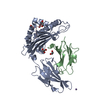
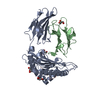

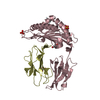

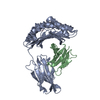
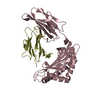
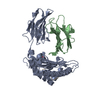


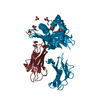

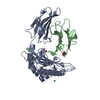

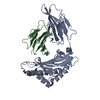
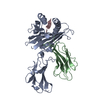


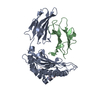
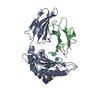

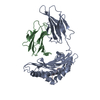
 PDBj
PDBj





